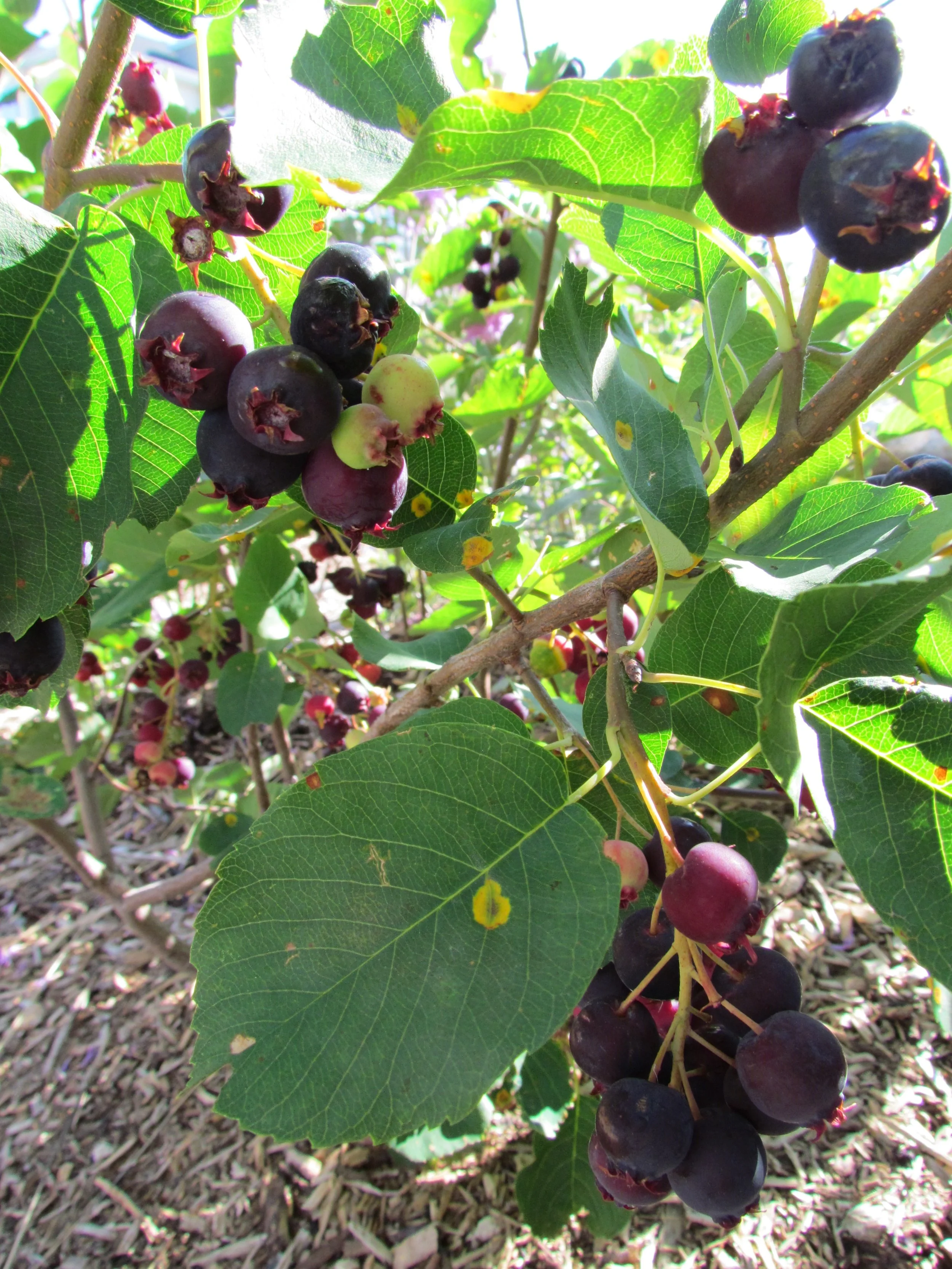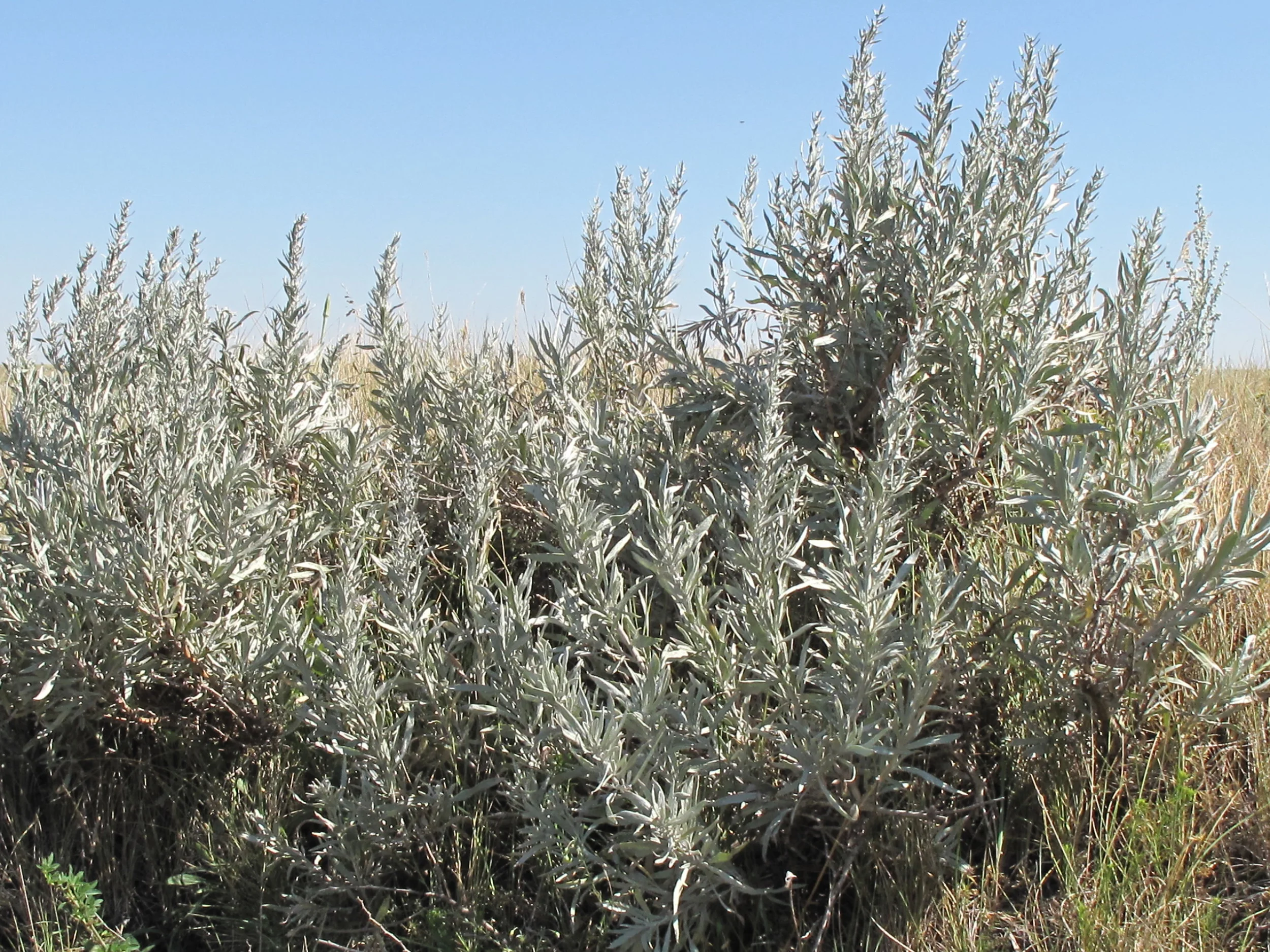According to Johnston, the saskatoon “was probably the most important vegetable food of the Blackfoot. The berries were used in great quantities in soups, stew, and meats, and were dried for winter use.”
Read MoreThis inhabitant of dry hillsides and eroded slopes of the grasslands is a gnarled shrub, 30–150 cm tall. Johnston reports that its silver-grey hairy leaves, 1–3 cm long, were chewed to relieve thirst and that “a decoction of leaves was taken as a tonic and was said to be effective as a hair restorer.”
Read MoreClusters of small white flowers in June create a mound of white in coulees and ravines where this vine climbs, spreading 3–6 metres over fences, shrubs and trees. In late summer and fall, clusters of feathery seed heads develop that hang on the vines into the winter.
Read MoreCommon along riverbanks and in moist meadows, the 1–3 m tall shrub often has bright red bark. In June it produces clusters of flat topped white flowers that mature into white berries 4–6 mm across.
Read MoreThis shrub or small tree reaches 1–5 m in height, and has many stout thorns, 2–7 cm long, along its branches. Clusters of white flowers in May mature into red or orange berry-like pomes about 1 cm across—like very small apples. The fruits, called haws, and the spines on the branches are combined in the common name—hawthorn
Read MoreIn late May and early June, the small yellow flowers of this grey-leaved, 1–4 m tall shrub, perfume the air with a fragrance reminiscent of jasmine. The wood, however, is not good for a campfire: when burned, it gives off an odour of human excrement.
Read MoreA small tree or shrub up to 6 m tall, the chokecherry is very common in ravines and open woodlands throughout the prairies. White flowers in a dense cylindrical raceme 5–15 cm long mature to astringent purple black fruit.
Read MoreOn south facing coulee slopes or river banks, this small shrub (1–2 meters high), has dense clusters of small yellow flowers at the end of its branches in May before any leaves appear. The flowers have a faint but unpleasant odour, hence the common name.
Read MoreThe common name of this 1–2 m tall shrub refers to the showy red-tipped yellow blossoms that smell strongly of cloves. Unlike other currants, the stems of the golden currant lack spines. The tart, juicy fruit ripens in July, and may vary from pale yellow to shades of red or black. It is often speckled with tiny yellow bristles.
Read MoreMost parts of the rose are edible—flower buds, petals, young leaves—but the hips are most nutritious. An analysis of the composition of rose hips revealed that 100 grams of hips contained 69,550 International Units of vitamin A (Johnston 42), and three hips can contain as much vitamin C as an orange.
Read MoreThis 30–75 cm tall shrub spreads by suckers to form a low thicket in moist areas. Two or three pale pink, bell-shaped flowers occur in small clusters at the end of stems and in the axils of the greyish green leaves. The waxy, white 6–10 mm berry-like fruit give this plant its common name.
Read MoreOn dry slopes, the cluster of pinkish white flowers nods at the end of a round stem 10–50 cm tall. When crushed, the leaves and stalks small strongly of onion.
Read MoreFound on the dry prairie, at 5–25 cm tall with white to pale pink flowers, the prairie onion is a small cousin to the nodding onion. The bulb’s mesh-like outer covering gave rise to its species name textile.
Read MoreThe leaves of the windflower look very similar to those of the prairie crocus, and both grow is the same habitat. The plant may be from 15–50 cm tall with solitary flowers that are usually white or pink and from 12–20 mm across.
Read MoreThe common name of this plant accurately describes the white blossoms; they feel soft and rounded like the pads of a kitten’s foot. The flowering stems, mostly less than 15 cm tall, grow out of the dense spreading mat of small grey leaves.
Read MoreCommon on the grasslands, this perennial has a woody base, but the new growth is soft and silky. Its silver grey foliage is very aromatic when handled. Growing 15–50 cm high, the stalks end with inconspicuous yellow flowers borne in loose racemes.
Read MoreShowy milkweed is well named: its purple-pink flowers are displayed near the end of tall stalks in round clusters 5–7 cm across, and a white sticky juice pours out if its stems or leaves are wounded. The dramatic seed pods are soft, large (7–10 cm) ovals that release seeds dispersed by the wind on long silky hairs.
Read MoreThis many stemmed plant may grow to 60 cm in height with several stalks per stem. The deep purple-blue flowers form a dense, narrow and blunt-topped mass at the top of each stem. The common name refers to the smooth seed pod that has two grooves on its top.
Read MoreThe 20–35 cm stems of ground plum sprawl across the dry grassland. Its leaves are composed of many leaflets that are smooth on top and hairy below. Typical sweet-pea type flowers are white with the keel, or bottom portion of the flower, having a purple tinge. The seeds are in distinctive, round pods 15–25 mm across
Read MoreThis plant has many stems 30–60 cm high, and each produces three or four stalks of drooping white flowers about 2 cm long. The dark grey-green leaflets number 25–30 per leaf, and are densely hairy on the bottom, but smooth on top.
Read More
















